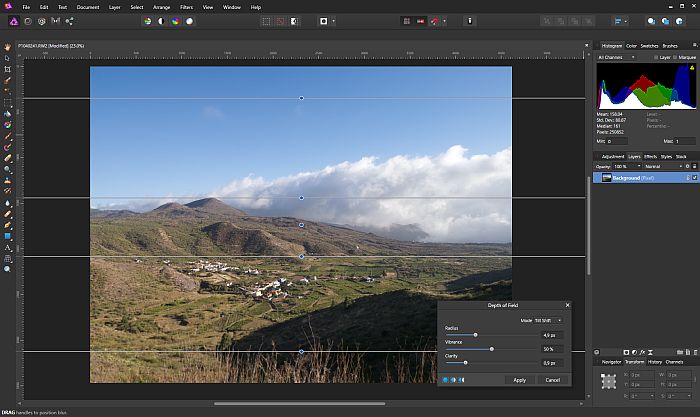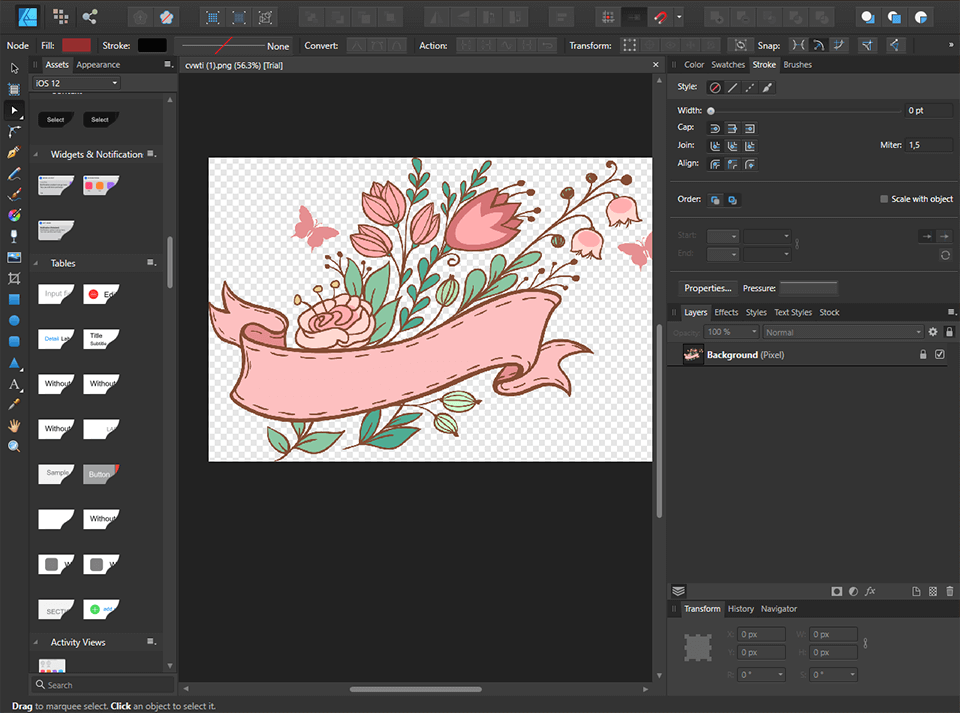Depending on who you ask, you will get different answers on which lens is the best for portraits. Some will answer with zoom lenses, typically with 24-70mm or 70-200mm focal lengths, and then there are the prime lens users with their 85mm or 135mm lenses. Here is another lens you probably never thought of using for portraits.
The lenses I mentioned above are not the only options, and really any lens can be used depending on the look you want. It depends on what you are trying to achieve. I have been using my Canon 35mm f/2.0 lens a bit more recently to do some more environmental portraits, but I haven't tried using a tilt-shift lens for portraits yet. In Eric Floberg's latest video, he talks about how he uses the Canon TS-E 45mm f/2.8 tilt-shift lens along with his Canon 5D Mark IV. After discussing how the lens performs and how it affects your images, Floberg shows some examples of his work while using the tilt-shift lens and follows up with a demonstration on how it can affect your portraits.
Download Serif Affinity Photo 1.9.0.911 full Crack – Hello, welcome back to the site encrack.com, as usual to re-post this time about Download Serif Affinity Photo 1.9.0.911 with keygen, Serif Affinity Photo 1.9.0.911 Full Version is program Affinity Photo comes with a huge range of high-end filters including lighting, blurs, distortions, tilt-shift, shadows, glows. Tilt-shift photo of buildings with trees in the foreground. In order to gain a better understanding of tilt-shift photography, one must understand how tilt-shift lenses work. These lenses can be tilted and shifted to control perspective. How to Use Affinity Photo for Focus Stacking; Affinity Photo 1.9 Update (2021). Faster, smoother and more powerful than ever, Affinity Photo continues to push the boundaries of professional photo editing software. With a huge toolset specifically engineered for creative and photography professionals, it has everything you need to edit and retouch images, create full-blown, multi-layered compositions or beautiful raster paintings, and so much more. Now to apply a tilt-shift effect I need to switch to Pixelmator Pro or to the Affinity Photo. Pity not to have such a possibility directly within the Luminar. It could be so nice to have it out of the box with the very first release, keeping in mind that the most photo-editing software in.
Breaking out and using different lenses in your work can help you get creative and capture unique photos. Sure, you can achieve similar effects in Photoshop, but capturing these effects in-camera also looks better in my opinion. As Floberg states, it forces him to be more creative during the shoot. What are some other unique lenses you use for portraits that are not typically used?
Apple is a company photographers and videographers follow with a mixture of excitement and dread. On the one hand, the Cupertino-based computer and software maker has given us the iPhone and a host of great hardware and applications for editing and sharing imagery. On the other hand, they have discontinued things dear to many, forcing inferior follow-up products on us. As is the case with the premature death of Aperture in favor of Photos. But by integrating Photos with Affinity Photo through extensions, you can restore some functionality to the program.
Before I go further, let me point out that what I'm suggesting here will only work for very specific use cases. I tend to avoid a lot of post processing. For some uses, such as quick online postings or Instagram, I need a program that will take my pictures from scans or raw files, apply some corrections in terms of shadows, highlights, exposure, brightness, and tonality, and then let me get on with life. Photos is not good enough for this yet, but it is the application in which all my iPhone snapshots automatically appear. If I use an Eye-Fi card or Apple's camera connection kit for iPads and iPhones, that's also true of photos I've taken on the go with more serious cameras. If you're looking for the path of least resistance from capture to finished product, sometimes saving extra steps in transferring images is worth the trade-off of putting up with a less-than-ideal software solution.
Affinity Develop adds much-needed functionality to Apple Photos's brightness and color editing options.
The Why
The obvious question regarding this combination is likely some version of 'Yes, but… why?' Fair enough. Here's why I like this combination. I'll admit, I am not a Photoshop native. Although I've worked with some version of the grand master of editing programs – the one that became the default to the point where its name is now a verb – on and off for over a decade and a half, the two of us never clicked. I loved Lightroom when it first came out in a beta version, but stopped using it in favor of Apple's Aperture a few years later. While Aperture was a good program, this was a bad decision.
For me, the draw of Aperture when it was still current was not only its much lower price point than Lightroom, or its seamless integration with a Mac-based workflow. It was also the fact that you could easily switch between having a simple, quick interface that integrated with online image-sharing services, most prominently Apple's own photostream and iCloud, by using iPhoto, and one that let you do most of what I would typically need to do to an image by using Aperture. All you needed to do was open the library file you were working with in one or the other. Since Aperture was abandoned, I've been casting about for an alternative. Apple's Photos is nowhere near the level of usefulness. Enter Serif's Affinity Photo and its extensions for Apple Photo.
Affinity Miniature allows for a tilt-shift effect to be applied.
The How

There isn't much to set up once you have Affinity Photo on your machine. The software itself is $49 on the Mac App Store. If you haven't heard much about it: it's a very affordable Photoshop alternative certainly worth a look.
Once you have Affinity Photo installed, six plugins, or extensions, will show up in Apple Photos' extension rider: Affinity Develop, Haze Removal, Liquify, Miniature, Monochrome, and Retouch, as well as an option to edit the image in Affinity Photo proper. Click on any one extension and go edit your picture. Saving the edits will take you back into Photos, where you can then select to apply more of Affinity's plugins, or tweak your image further using Photos itself.
Affinity Monochrome lets you fine-tune a black-and-white conversion right from the Photos app.
What I Liked
Apple Photos and Affinity Photo make for a more powerful combination than I first thought. If you're looking to quickly retouch a photo taken on your iPhone that's in Apple's cloud already, it's a near-seamless solution. You wouldn't really expect me to recommend this combination for serious editing work, though. I won't. Lightroom's (and formerly, Aperture's) mere existence has proved that we want professional software to organize and quickly tweak our images. When more excessive processing is called for, Photoshop still beckons – or, depending on your needs, Affinity Photo as a standalone program.
What I Didn't Like

The most glaring drawback of using an application like Photos with a more serious, capable application by another software maker such as Serif's photo editing application is simply that it's a workaround. Lightroom, Aperture, Photoshop, and Affinity Photo as standalone programs are capable of using plugins by themselves. I have long used the excellent and free Nik Collection for a large range of filtering and editing tools.
Since there is no way to integrate this directly into Photos, in order to use it you would be forced to first go into Photos' editing mode, then open the extensions section, select 'Edit in Affinity Photo' to send the image from Apple Photos to Affinity, and then edit it there with your choice of plugin. If your eyes just glazed over reading this: it's not at all more straightforward actually doing it.
Tilt Shift Photo

The final edit fixes the white balance, removes a blue color cast, and brightens the shadows.

How To Tilt Shift
The Takeaway
The combination of Photos and Affinity Photo's plugins is nowhere near a replacement for Lightroom or the defunct Aperture, but if you're looking to use Apple's free software to do some heavier-than-normal lifting, it may just be the ticket.

Tilt Shift Effect
Apple's Photos App is a free download from the Mac App Store. Affinity Photos costs $49/€49, also downloadable from the App Store.
